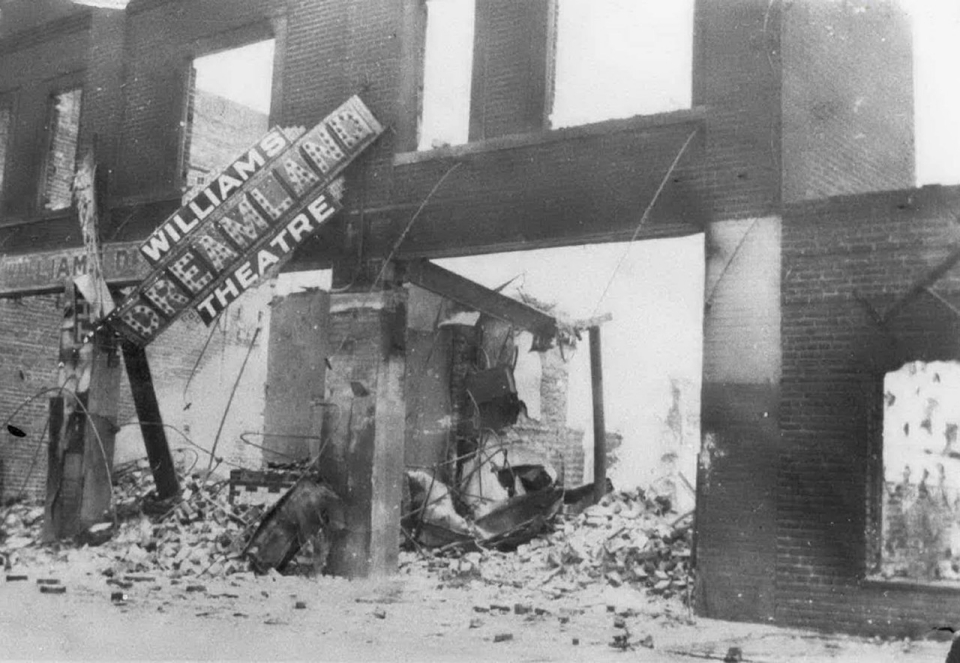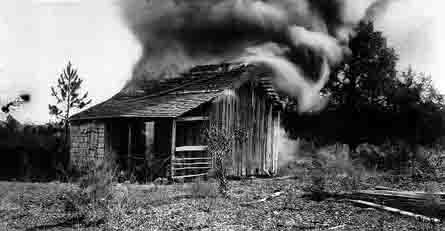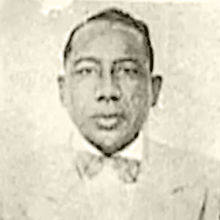It was only a 1-square-mile area on the north side of Tulsa, but for blacks in the 1900s, Greenwood was everything the South was not. Filled with black lawyers, doctors and business owners, flush with prosperity, here was an area where African-Americans finally had a chance to make something of themselves, escaping the harsh racism of a nation that deprived them of even the most basic dignities.
A dollar would circulate 19 times before leaving Greenwood, a byproduct of the segregation laws, which kept blacks from shopping anywhere else but also united the community financially. There was affluence and education in Greenwood not seen anywhere else in the country for African-Americans, and each day more people were coming to carve out a piece of the dream for themselves, adding to the prosperity of the neighborhood.
This was the town Olivia Hooker was born in, the place she called home as a little girl, an African-American child oblivious to the racism plaguing the country until the day in 1921 when all of her neighborhood would be wiped off the map in the space of a day: the bank, the elegant brick homes, the Red Wing Hotel, Mann’s Grocery, the Dreamland Theatre, even her father’s department store, the Sam D. Hooker Store at 124 Greenwood Avenue.
On May 30, 1921, a young black man was accused of assaulting a white woman. That accusation was the tipping point for a town already reeling from racial tension, and would turn into the worst 24 hours in the city’s history, known as the Tulsa Race Riot.
... 19-year-old [Dick] Rowland was riding in an elevator operated by 17-year-old [Sarah] Page. Rowland tripped as he was exiting the elevator and grabbed Page’s arm in an attempt to steady himself. She screamed, and he fled the elevator as a white clerk from a nearby store came to investigate the noise. He assumed Page, apparently distraught from the incident, had been assaulted by Rowland and called the police.
Like a game of telephone, the story became more inflammatory with each retelling, and spread rapidly. Rowland hid in Greenwood, terrified he’d be lynched for allegedly raping a white girl. He was arrested the next morning and taken to the courthouse, where a vigilante mob had arrived to demand that police turn him over to the crowd.
...Over the course of 24 hours, Greenwood would be looted, set ablaze and literally burned off the map. All 35 blocks were gone.
When the smoke cleared on June 1, more than $1.5 million in damage (about $20 million in contemporary dollars) had been done; as many as 300 people, black and white, had been killed; and thousands of black families were left homeless, with nothing but rubble and ash to call home.
A dollar would circulate 19 times before leaving Greenwood, a byproduct of the segregation laws, which kept blacks from shopping anywhere else but also united the community financially. There was affluence and education in Greenwood not seen anywhere else in the country for African-Americans, and each day more people were coming to carve out a piece of the dream for themselves, adding to the prosperity of the neighborhood.
This was the town Olivia Hooker was born in, the place she called home as a little girl, an African-American child oblivious to the racism plaguing the country until the day in 1921 when all of her neighborhood would be wiped off the map in the space of a day: the bank, the elegant brick homes, the Red Wing Hotel, Mann’s Grocery, the Dreamland Theatre, even her father’s department store, the Sam D. Hooker Store at 124 Greenwood Avenue.
On May 30, 1921, a young black man was accused of assaulting a white woman. That accusation was the tipping point for a town already reeling from racial tension, and would turn into the worst 24 hours in the city’s history, known as the Tulsa Race Riot.
... 19-year-old [Dick] Rowland was riding in an elevator operated by 17-year-old [Sarah] Page. Rowland tripped as he was exiting the elevator and grabbed Page’s arm in an attempt to steady himself. She screamed, and he fled the elevator as a white clerk from a nearby store came to investigate the noise. He assumed Page, apparently distraught from the incident, had been assaulted by Rowland and called the police.
Like a game of telephone, the story became more inflammatory with each retelling, and spread rapidly. Rowland hid in Greenwood, terrified he’d be lynched for allegedly raping a white girl. He was arrested the next morning and taken to the courthouse, where a vigilante mob had arrived to demand that police turn him over to the crowd.
...Over the course of 24 hours, Greenwood would be looted, set ablaze and literally burned off the map. All 35 blocks were gone.
When the smoke cleared on June 1, more than $1.5 million in damage (about $20 million in contemporary dollars) had been done; as many as 300 people, black and white, had been killed; and thousands of black families were left homeless, with nothing but rubble and ash to call home.

Even then, there were people who wanted to pay restitution.
According to a 1921 New York Times article, Judge Loyal J. Martin, a former mayor of Tulsa who chaired the first race riot committee — the Tulsa City Commission — just days after the attack, said in a mass meeting that the city could redeem itself and move forward only “by complete restitution and rehabilitation of the destroyed black belt.”
"The rest of the United States must know that the real citizenship of Tulsa weeps at this unspeakable crime and will make good the damage, so far as it can be done, to the last penny,” he said.
But that never happened. Insurance companies denied claims from African-Americans, leaving them with nothing but the clothes on their backs, forced to start over or leave. Blacks tried to sue the city and state for damages but had their claims blocked or denied, according to the official report.
On June 14, just two weeks after the riot, Mayor T.D. Evans addressed the commission, telling it that the incident was “inevitable” and that the victims “should receive such help as we can give them.”
But then he said something else: “Let us immediately get to the outside fact that everything is quiet in our city, that this menace has been fully conquered, and that we are going on in a normal condition.”
In other words: The city should move on. And for 90 years, that’s what happened.
After an initial flurry of reports, with articles appearing as far away as the London Times, news of the “troubles” in Tulsa vanished.
The Tulsa Race riot, one of the absolute nadirs of American history even in an era of blatant racism, was two days of hell, sending 800 to hospitals (the two "black" hospitals having been burned down along with everything else), arrested more than six thousand and left an estimated ten thousand people homeless -- all because of nothing more than rumor and innuendo.
Well, perhaps "nothing more" is not quite accurate -- the rumor and innuendo was merely the catalyst that set off deep-seated racist hate that had already been manifesting in the decades around it, where lynchings and race riots were almost an everyday occurrence, peaking in the infamous Red Summer of 1919. In Tulsa, thirty-five city blocks were reduced to rubble, including over twelve hundred residences, even attacked by air (in 1921, by AIR) with strafing and firebombs. Deaths were estimated anywhere between 39 and 300.
History books, both in Oklahoma and in the general nation, tend to forget to mention all this.
Lest
We
Forget
Last edited:



